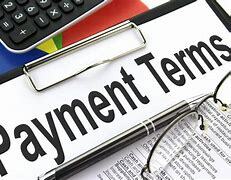
Paying your taxes when due means you don't accumulate penalties and extra charges. Failure to file tax returns or pay due taxes in full also attracts charges.
Some people default because they don't know how best to clear their debt quickly. The IRS has a simplified payment system that allows you to pay your taxes directly from your savings account at no cost to you. That way, you can conveniently avoid charges and penalties.
What is IRS Direct Pay?
The IRS Direct Payment system is a free, secure payment system that makes it very convenient to pay taxes. With a profile that runs almost 24-hours a day and seven days a week (the official operational hours are- Monday to Saturday: Midnight to 11:45 p.m. E.T.; Sunday: 7 a.m. to 11:45 p.m. E.T.), you can make payments from the comfort of your home, while receiving instant notification of confirmation of payment submission. With Direct Pay, it has never been easier paying taxes. IRS Direct Pay allows subscribers to make tax payments directly from their bank accounts.
Direct Pay is one-way traffic, and it is the taxpayer that pays. It is strictly to ease payment of taxes and does not allow for receiving tax credits or refunds into your account.
You can also keep track of payments and updates with the email notification system. This has, however, opened up a lot of unsuspecting taxpayers to fraudulent emails. If you do not subscribe to email notifications on Direct Pay, you should note that the IRS would never send you mail. You should also never share personal information online, as the IRS would never ask for your data. If you receive any suspicious mail, be sure to verify its authenticity before replying.
However, taxpayers can cancel the use of the service at any time and at no cost.
Using Direct Pay
Visit the Direct Pay page on the IRS website. Choose the Make Payment option. You'll then be asked some questions to verify what you want to pay for and the reason for payment. Although it is straightforward, you may need some professional guidance if you are using it for the first time.
Once you're using Direct Pay, you'll be given a confirmation number proof that you authorize the IRS to withdraw the said amount. Once the transaction is complete, you get a notification. To be sure the tax (or any other payment) has been made, you can confirm from your bank or your online tax account. If you have any problems confirming the transaction, you may have to wait two business days before making a complaint. If, however, after two business days, the transaction is not confirmed, then you may contact the IRS for assistance.
IRS Direct Pay can only be used with a U.S. bank as the transaction requires a nine-digit U.S. bank routing number to complete.
Once you're revisiting Direct Pay, your information is verified before proceeding.
One of the significant advantages of Direct Pay is that you can schedule payment upfront. The system allows for advance payment for up to a year. All you need to do is select the payment date.
Types of payments allowed with Direct Pay
These are the types of returns that taxpayers can make with Direct Pay: Income Tax, Health Care payments, Estimated tax, Amended Return, Installment Agreement, Extension to file, and Additional taxes on qualified plans.
Limitations of Direct Pay
IRS Direct Pay is designed to help workers pay taxes more conveniently. It is not configured for heavy arbitrary payments.
Within 24 hours, you can't pay more than twice. Also, every payment on Direct Pay must have a value of less than $10 Million. Other alternatives like the EFTPS can be used to make payments higher than that amount.
FOR MORE INFORMATION ON HOW KLSM CPA FIRM, PLLC. CAN BEST HELP YOU WITH YOUR TAX FILING NEEDS, PLEASE CLICK THE BLUE TAB ON THIS PAGE.
THANKS FOR VISITING.
